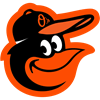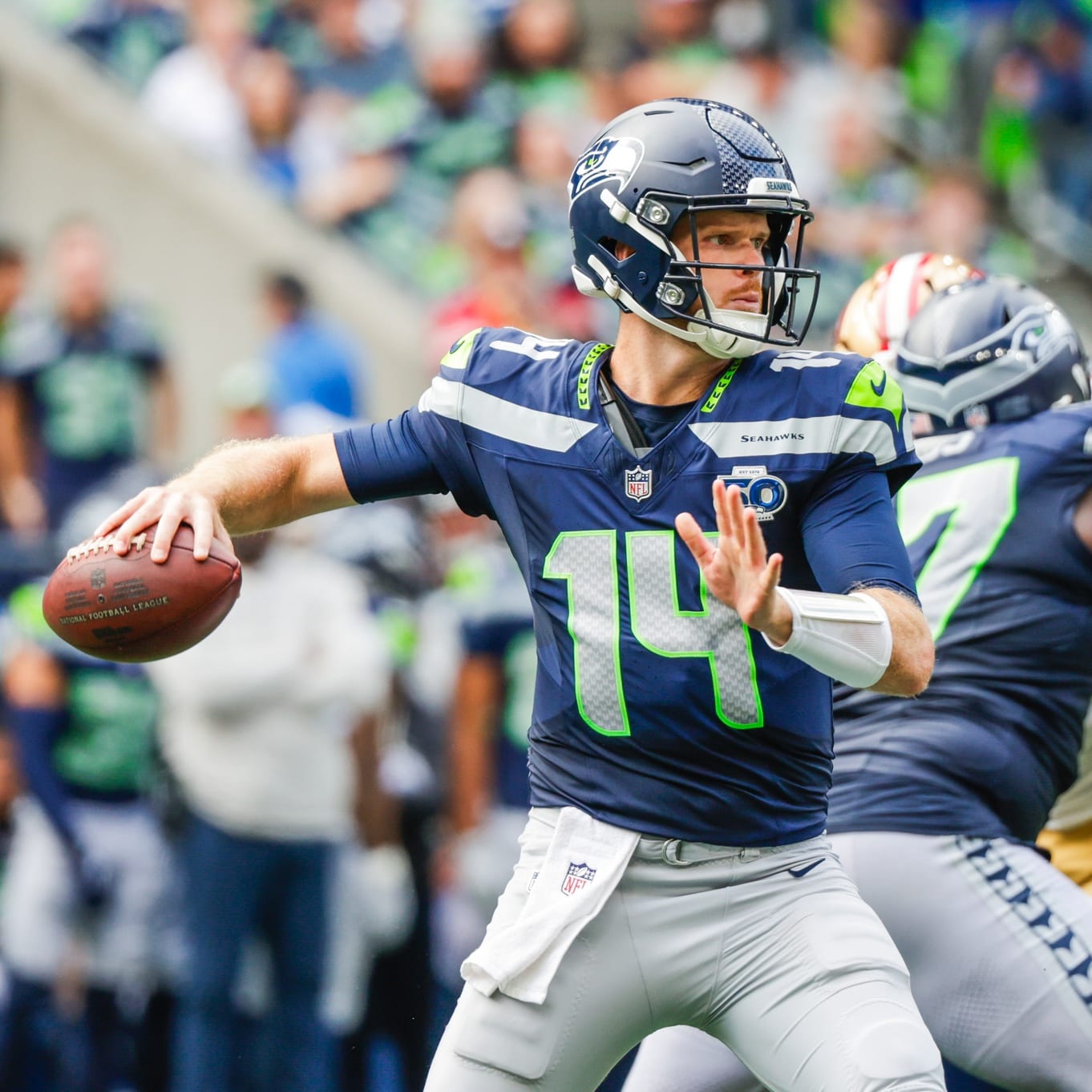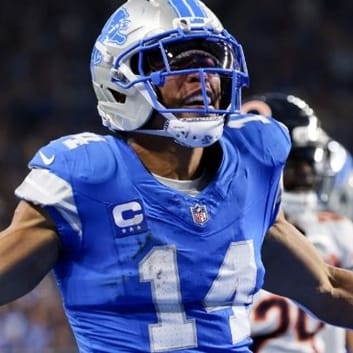After a rather lengthy hiatus from fantasy football analysis, I'm back to start and finish a journey to find which fantasy football stats are relevant and irrelevant. I have gotten to the point where I know what is and isn't useful in fantasy baseball, which has helped me win my Tout Wars league last season and accumulate a decent lead this season. It's time to focus on football.
I want to systematically separate the grain from the chaff. There are a ton of football narratives floating around but few hardcore facts. It'll be a slow but worthwhile journey to get a better understanding of what to and not to believe.
I have little to no football player knowledge. I can rattle off 25-man baseball rosters and know each team's top-30 prospects but would have a tough time naming 15 running backs. I'm not going to analyze week-to-week playing time battles. Instead, I'm going to focus on the meta-analysis projections. No gut feelings here. Sorry.
While I know football projections won't work exactly like they do in baseball, the same theories apply such as sample size, correlation, regression and playing time. Once the basics are known, the effects other variables (game line, opposing defense, complementary players) have can be slowly incorporated.
Besides looking into the player projections, I want to look into some game theory like which players are most likely to be replaced and when in a draft is it better to take a chance on upside versus
After a rather lengthy hiatus from fantasy football analysis, I'm back to start and finish a journey to find which fantasy football stats are relevant and irrelevant. I have gotten to the point where I know what is and isn't useful in fantasy baseball, which has helped me win my Tout Wars league last season and accumulate a decent lead this season. It's time to focus on football.
I want to systematically separate the grain from the chaff. There are a ton of football narratives floating around but few hardcore facts. It'll be a slow but worthwhile journey to get a better understanding of what to and not to believe.
I have little to no football player knowledge. I can rattle off 25-man baseball rosters and know each team's top-30 prospects but would have a tough time naming 15 running backs. I'm not going to analyze week-to-week playing time battles. Instead, I'm going to focus on the meta-analysis projections. No gut feelings here. Sorry.
While I know football projections won't work exactly like they do in baseball, the same theories apply such as sample size, correlation, regression and playing time. Once the basics are known, the effects other variables (game line, opposing defense, complementary players) have can be slowly incorporated.
Besides looking into the player projections, I want to look into some game theory like which players are most likely to be replaced and when in a draft is it better to take a chance on upside versus safety. The common narratives can begin a transition to being fact or fiction, not just some consensus theories.
I decided to try to catch up on all the current available stat-based analysis. I went to my local book store and found 20-plus fantasy football magazines. After looking through each one, only five (including the RotoWire Fantasy Football magazine) contained any stat-based analysis. Half dissed on a stat-based approach and said "go with your gut." The other half was filled with so many stats my head hurt. It seemed like 99 percent of the available written information was player narratives repeated with little to no guidance on how to use the provided information.
Now, two pieces of information were common to the written analysis. The first one is if in an auction, buy whoever you like no matter the cost. Extreme studs-and-scrubs is the way to go. After seeing this philosophy fail miserably in fantasy baseball I have my doubts about its success level but will eventually find out. I've been wrong before.
The second theme I read was that playing time is king, and I can't agree more. In baseball, it was the Holy Grail to finally locking down player values. I average playing-time estimates from three sources to help fill the gaps. It will be even a bigger deal in football.
I expect playing time (i.e. touches) to be the biggest single factor in deciding player values. With only five to seven players per team contributing fantasy stats, understanding playing time is the first factor to consider when searching for rosterable players. But I believe it is not the only factor. I could be wrong. Basically, all projections, season long or weekly, comes down to: Playing Time x Talent = Production.
Those two points were the only consensus points I could find. I am sure more is available and I will gladly consume it if it's pointed out.
My road map to start the season begins with quarterbacks. Besides the center, they are the only person to always touch the ball on non-kicking plays. Everything involving the offense goes through them. I will come up with a yearly weighted regressed projection with an aging factor. Then I'll move onto wide receivers, running backs and tight ends using the same method. Additionally, I will create a basic rookie projection based on draft pick and any available combine information.
After getting a basic preseason talent projection, I will move onto in-season projections by weighting Week 1 results to the preseason projection. Also, I will begin to find out if other factors, especially the Vegas line and team touch distribution, help to refine the in-season projections.
After creating and refining a basic player projection system, I will move onto figuring out if anything exists to the common narratives. I expect most of these tangents to come from reader comments or from talking heads. I want to answer as many questions as possible, so please add them to the comments and I will eventually get to them. For many of these narratives, I expect there to be no answers, but that is usable information.
In "The Evolution of Everything", Matt Ridley discusses how these narratives (e.g. injury proneness) become "true:"
"… the characteristic features of a mystical and therefore untrustworthy theory are that it is not refutable, that it appeals to authority, that it relies heavily on anecdote, that makes a virtue of consensus (look how many people believe like me!), and that takes the moral high ground."What I want to do is go after the "it is not refutable." Most of the narratives (theories) are refutable, but they may take some time to answer. Also, I think people don't like to have their beliefs upended and to find out they've been wrong for years.
I'm done rambling for today. I have quarterbacks to analyze. Please let me know of any theories/narratives you want me to investigate. I'd like to have as many as possible as it may be possible to answer several at the same time.






































